Arts and Crafts Gardens
Arts and Crafts gardens are one of the most long-lasting and loved styles of garden design in the UK. The appeal isn’t just about aesthetic; they embody a way of thinking that values skilled craftsmanship, natural beauty, and balance between people and nature.
How the Arts and Crafts Movement Began
The Arts and Crafts movement began around 1880 as a reaction to the rise of factories and mass production during the Victorian era. Many designers felt that factory-made goods were dull and lacking in soul, and they wanted to go back to handmade items made with care and skill. They believed that useful things should also be beautiful.
One of the key leaders of the movement was William Morris, who believed that hand-crafted items were better not just in looks but also in spirit. This idea naturally spread into garden design. Gardens became an important part of the home: an outdoor room where beauty and function worked together.
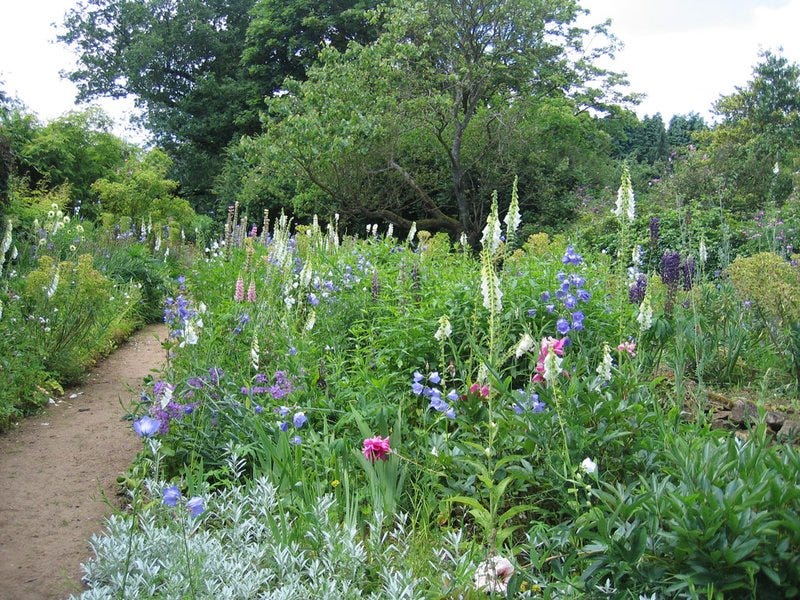
Key Figures in Arts and Crafts Gardening
One of the most famous names in Arts and Crafts garden design is Gertrude Jekyll (1843–1932). She was a trained artist and had a great understanding of color. She used that knowledge to plan gardens that looked like living paintings. She often worked with architect Sir Edwin Lutyens, and together they created gardens that combined strong structure with soft, colorful planting.
Other important designers included:
William Robinson, who supported wild, natural-looking gardens.
Harold Peto, who added Italian and classical styles to his designs.
Thomas Mawson, a landscape architect who blended formal structure with a more relaxed planting style.
What Makes an Arts and Crafts Garden
Garden Rooms
One of the key features of this style is dividing the garden into separate "rooms". These spaces are usually surrounded by hedges, walls, or wooden structures. Each room has a special theme or use: like a rose garden, a vegetable plot, or a flower-filled meadow.
Mixing Structure and Soft Planting
These gardens are known for their mix of clear structure and gentle, romantic planting. You’ll often find straight paths, stone terraces, and neat layouts, with borders full of colorful, flowing plants. This mix creates a space that feels both ordered and alive.
Handmade and Local Materials
Staying true to the movement’s values, Arts and Crafts gardens use hand-crafted and local materials. You might see dry stone walls, wooden pergolas, and clay pots made by hand. These details give the garden a unique, personal touch.
Interest All Year Round
These gardens are designed to be interesting in every season. Gertrude Jekyll was famous for her planting plans that made sure something was always blooming or changing color. Gardeners also choose plants for their smell, texture, and ability to attract bees and butterflies.
Connecting Home and Garden
In Arts and Crafts style, the garden is seen as an extension of the house. Paths often line up with doorways and windows, and materials from the house, like stone or brick, are used in the garden too. These gardens also try to blend into the surrounding landscape, making it feel like part of nature rather than something separate.
How Plants Are Used
Arts and Crafts planting is often described as painterly. Gertrude Jekyll planned her gardens like an artist using color schemes, different plant heights, and textures to create a beautiful scene.
Popular plants include:
Perennials: like delphiniums, lupines, and hollyhocks;
Climbers: such as clematis and rambling roses;
Shrubs: including lavender, hydrangea, and box;
Edibles and herbs: often grown in beautiful patterns among the flowers.
Plants are arranged in layers to make the borders look deep and full. Gardeners also make sure different plants bloom at different times, so the garden changes and stays exciting through the seasons.
How Does an Arts and Crafts Garden Differ from a Cottage Garden?
The seemingly informal nature of Arts and Crafts gardens has caused some people to confuse them with cottage gardens. While both garden styles celebrate natural beauty and traditional planting, they have distinct differences in design and intention:
Structure and Layout
Arts and Crafts gardens are carefully designed with a strong underlying structure. They often feature terraces, axial paths, defined “rooms,” and built elements that link the house to the garden.
Cottage gardens are much more informal and less structured. Paths meander, plantings are densely packed and spontaneous, and there is little sense of geometric order.
Design Philosophy
Arts and Crafts gardens reflect a blend of formality and informality. They are artistically composed, with great thought given to harmony, proportion, and seasonal change. The architecture of the house and garden are tightly connected.
Cottage gardens come from a more functional and humble tradition, originally used to grow both food and flowers. Their design is more about charm and abundance than visual planning.
Materials and Craftsmanship
Arts and Crafts gardens highlight craftsmanship with locally sourced materials such as stone walls, custom gates, pergolas, and handmade pots.
Cottage gardens tend to use simpler, often reused materials, such as picket fences, stone borders, or timber edging, more for practicality than artistic effect.
Planting Style
Both styles use traditional flowers like hollyhocks, delphiniums, and roses, but:
Arts and Crafts gardens use plants in carefully orchestrated combinations, emphasizing texture, color harmony, and succession planting.
Cottage gardens embrace a joyful jumble of plants, mixing edibles, herbs, and ornamentals in a seemingly haphazard (but charming) way.
Famous Gardens You Can Visit in the UK
Hestercombe Gardens, Somerset
Designed by Jekyll and Lutyens, Hestercombe is known for its lovely terraces, water features, and carefully planned borders. It’s a great example of structure and soft planting working together.
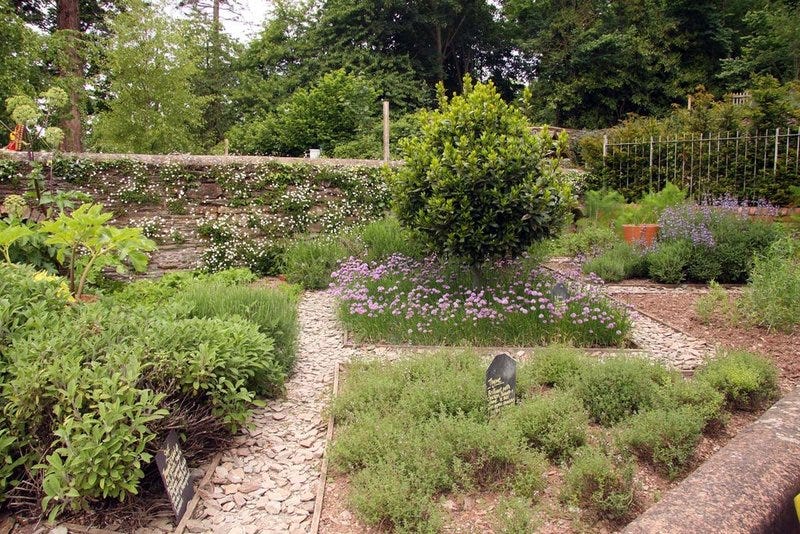
Hidcote Manor Garden, Gloucestershire
American designer Lawrence Johnston created this garden using the idea of outdoor rooms. Each section has its own style and mood, and the whole place feels calm and enclosed.
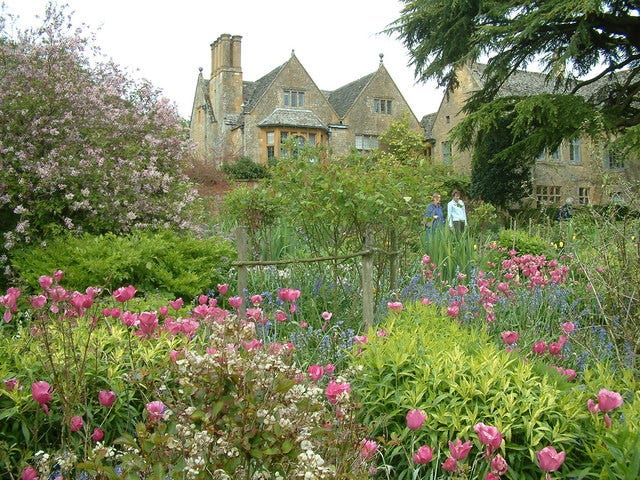
Great Dixter, East Sussex
The house at Great Dixter was built by Lutyens as a romantic recreation of a medieval manor and the garden was created by Christopher Lloyd. The garden mixes bold plant choices with traditional layouts.
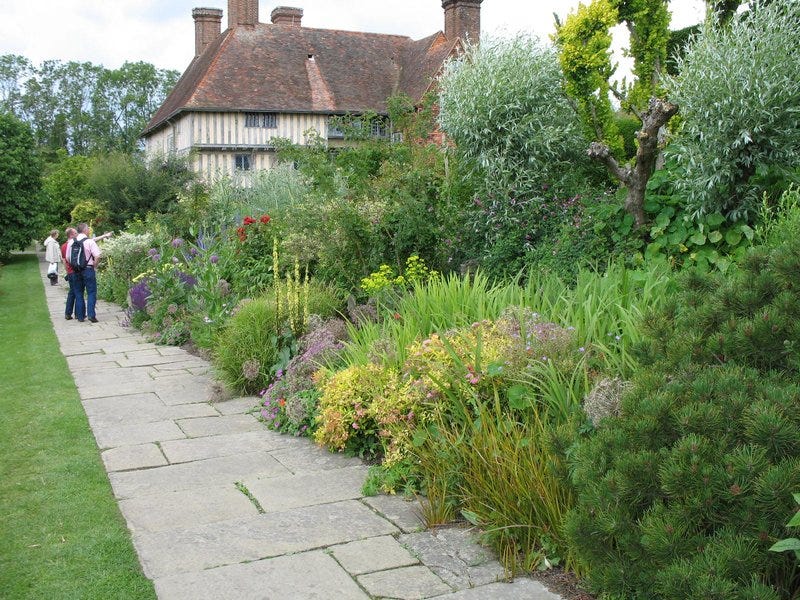
Sissinghurst Castle Garden, Kent
One of England’s most famous gardens, designed by Vita Sackville-West and Harold Nicolson. Its layout with separate areas, rich planting, poetic feel combined with formal hedging reflect the Arts and Crafts spirit very well. Walls and formal hedges are used to separate the space into multiple garden rooms.
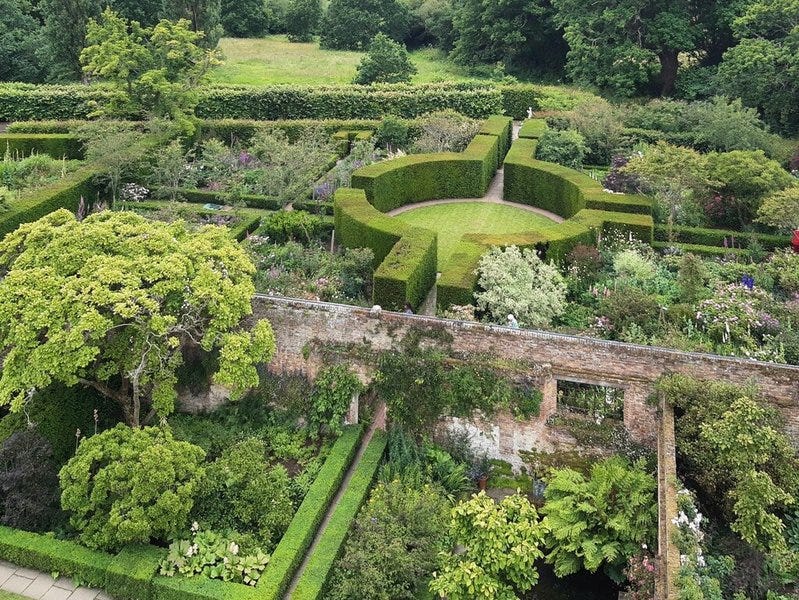
Why This Style Still Matters
Arts and Crafts gardens have had a big impact on how we design outdoor spaces. Their focus on quality materials, beauty in every season, and harmony with nature is still very important today. In a busy world, these gardens remind us to slow down and enjoy the small details.
Whether you're walking through a famous estate or working on your own backyard, this style encourages a deeper connection with nature. It’s about making something lasting, meaningful, and full of life.
How to Create Your Own Arts and Crafts Garden
If you’d like to try this garden style at home, here are a few basic tips:
Use local, natural materials for paths, walls, and garden features.
Divide your garden into smaller sections (rooms), each with a different purpose.
Choose traditional plants and arrange them in layers.
Think like an artist: plan for color, shape, and seasonal changes.
With these ideas, you’re not just planting flowers; you’re creating a space with heart, tradition, and a sense of beauty that will grow over time.


